Jenkins Project: Building CI/CD Pipeline for Scalable Web Applications
Single Server Deployment
Demo Deploying App
In this guide, you'll learn how to set up a production server on AWS to deploy your application. Later, this server will serve as the target when configuring your CI/CD pipeline. Follow these steps to launch an Amazon EC2 instance, configure SSH access, and set up a systemd service for your Flask app.
Step 1: Launching an EC2 Instance
When you log into the AWS console, you will see the EC2 management console displaying a list of running instances:

To create a new instance:
- Click on the Launch Instance button.
- Choose the desired Amazon Machine Image (AMI) and instance type. For a basic Linux server, the default configuration is sufficient.
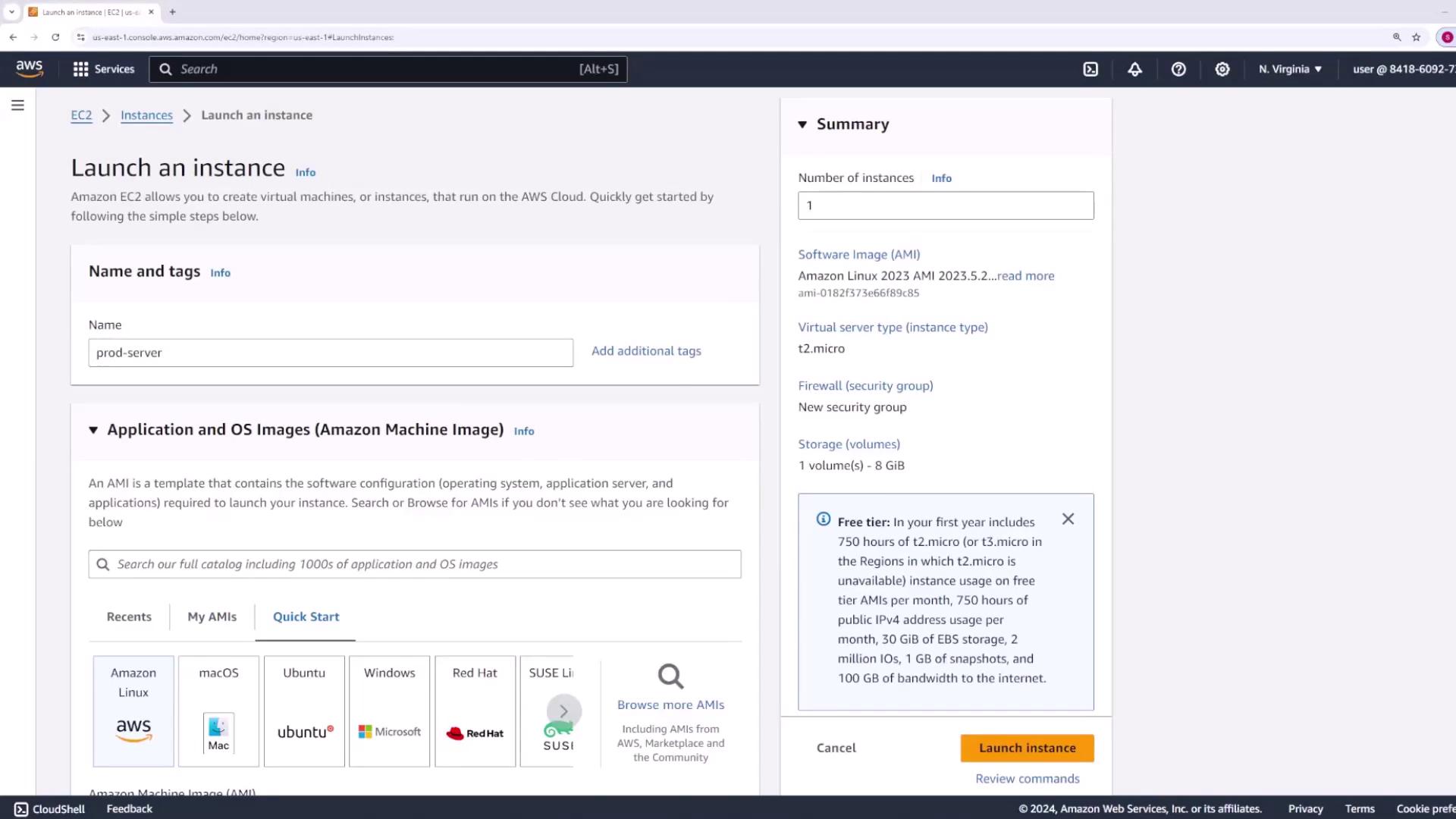
Important Settings:
- Instance Type: Use the default instance type (usually a t2.micro with 1 GB memory and one vCPU).
- Key Pair: Select an existing SSH key (e.g., "main") for secure access. This will be crucial later when Jenkins connects to your server.
- Network Settings: Ensure you allow both HTTPS and HTTP traffic, as your server will host a web service.
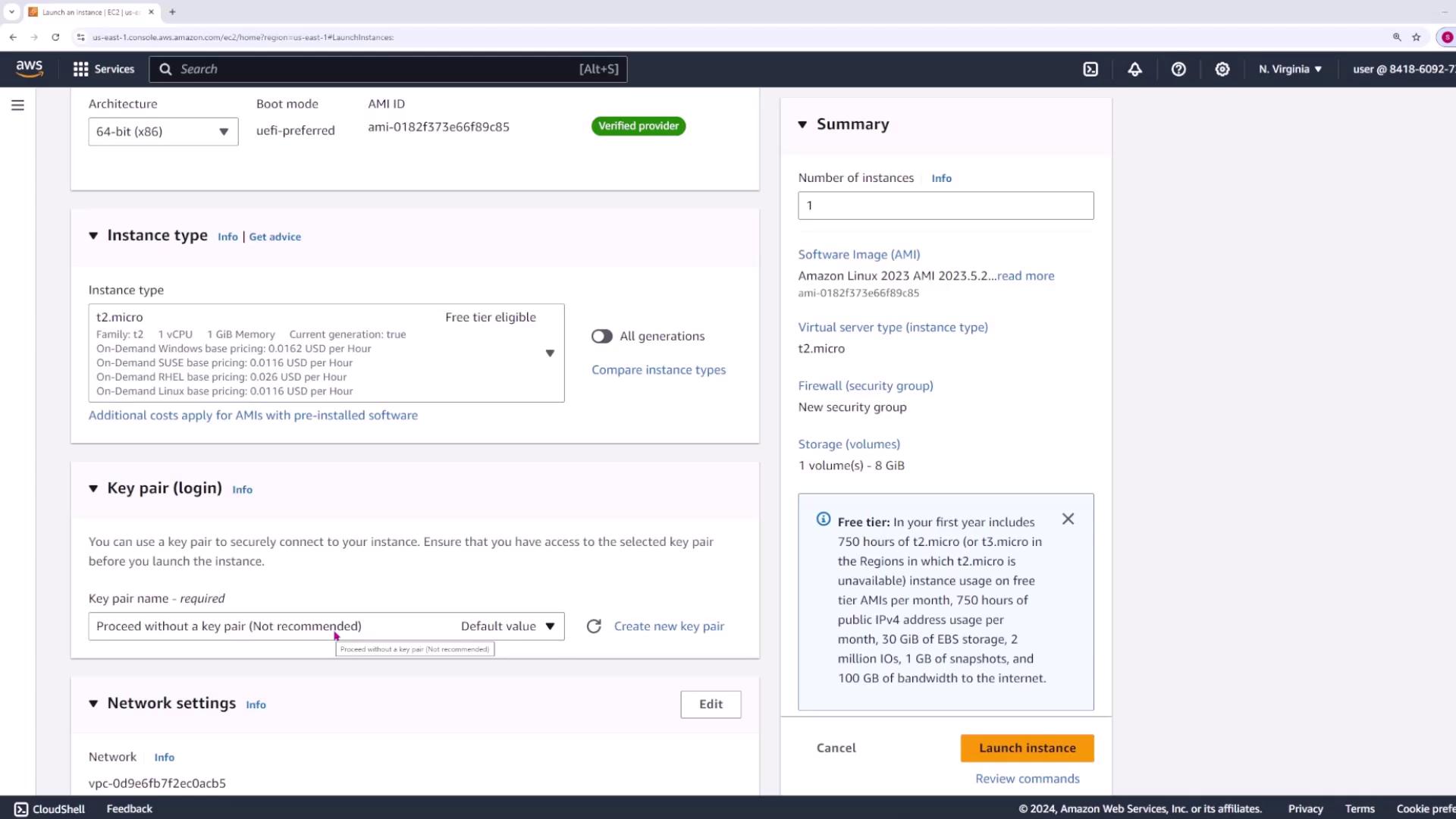
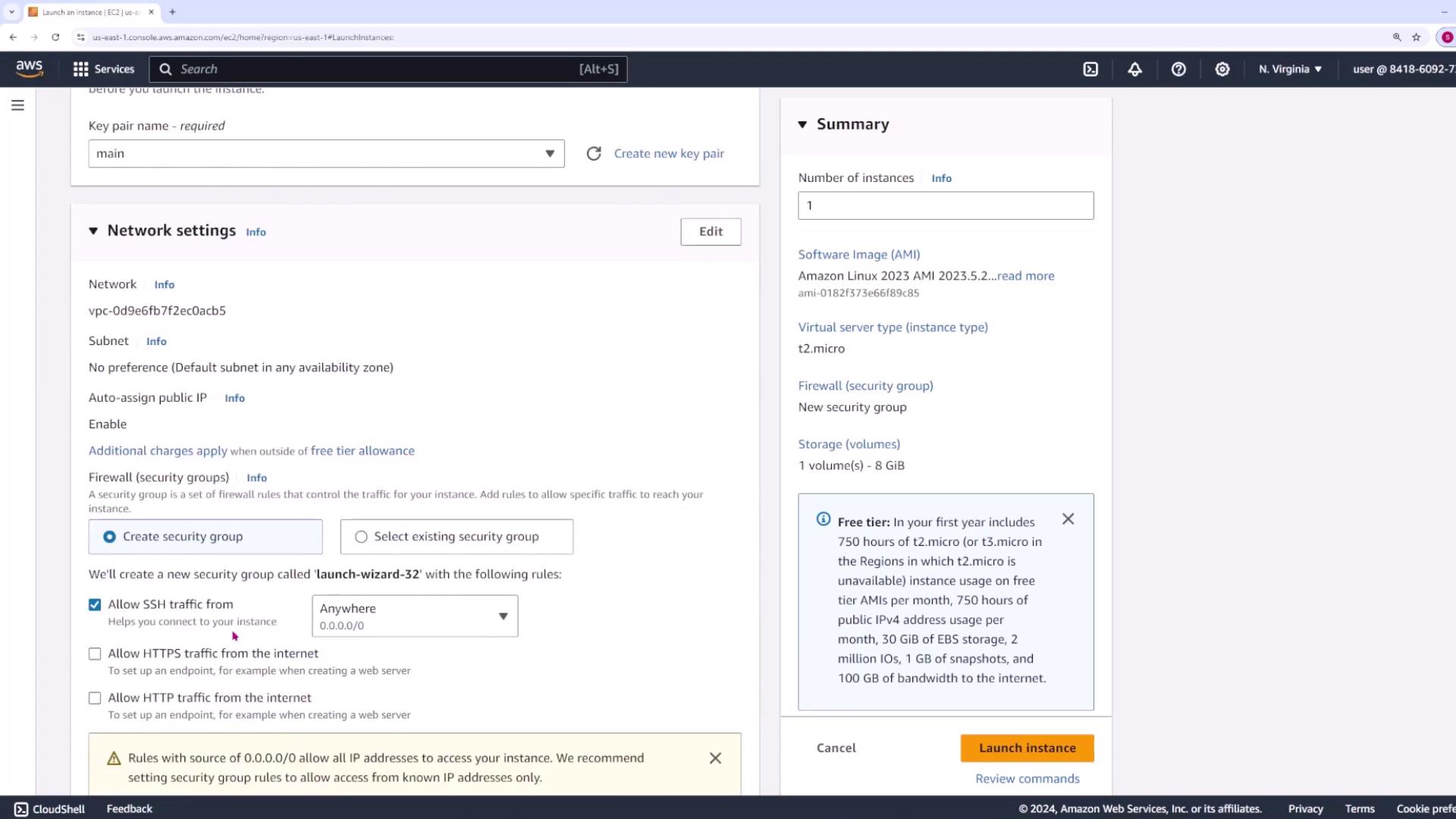
After confirming your configuration, click Launch. Wait for a minute or two for the instance to start up.
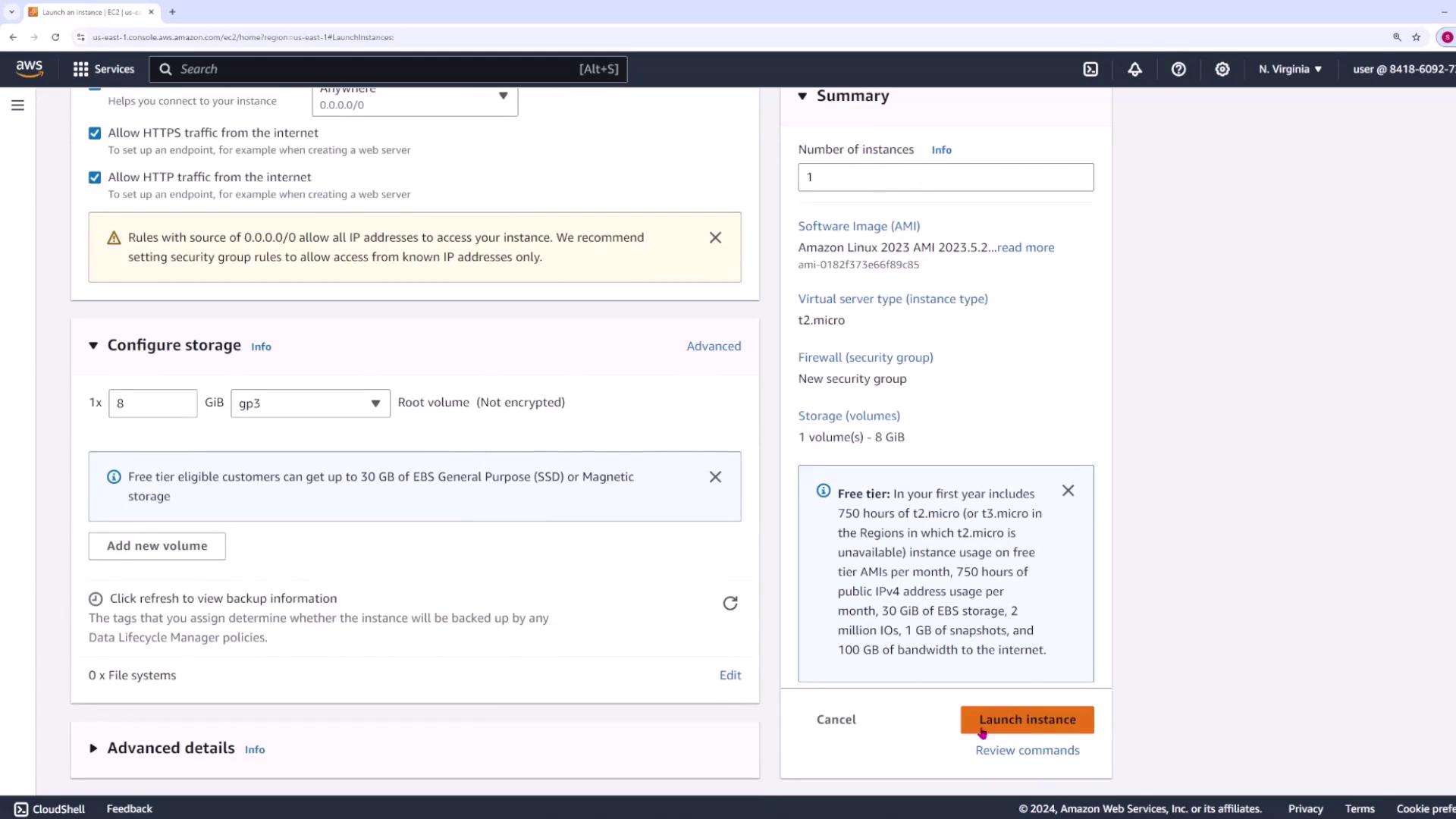
Once the instance is running, return to the instances list to locate your production server and copy its IP address.
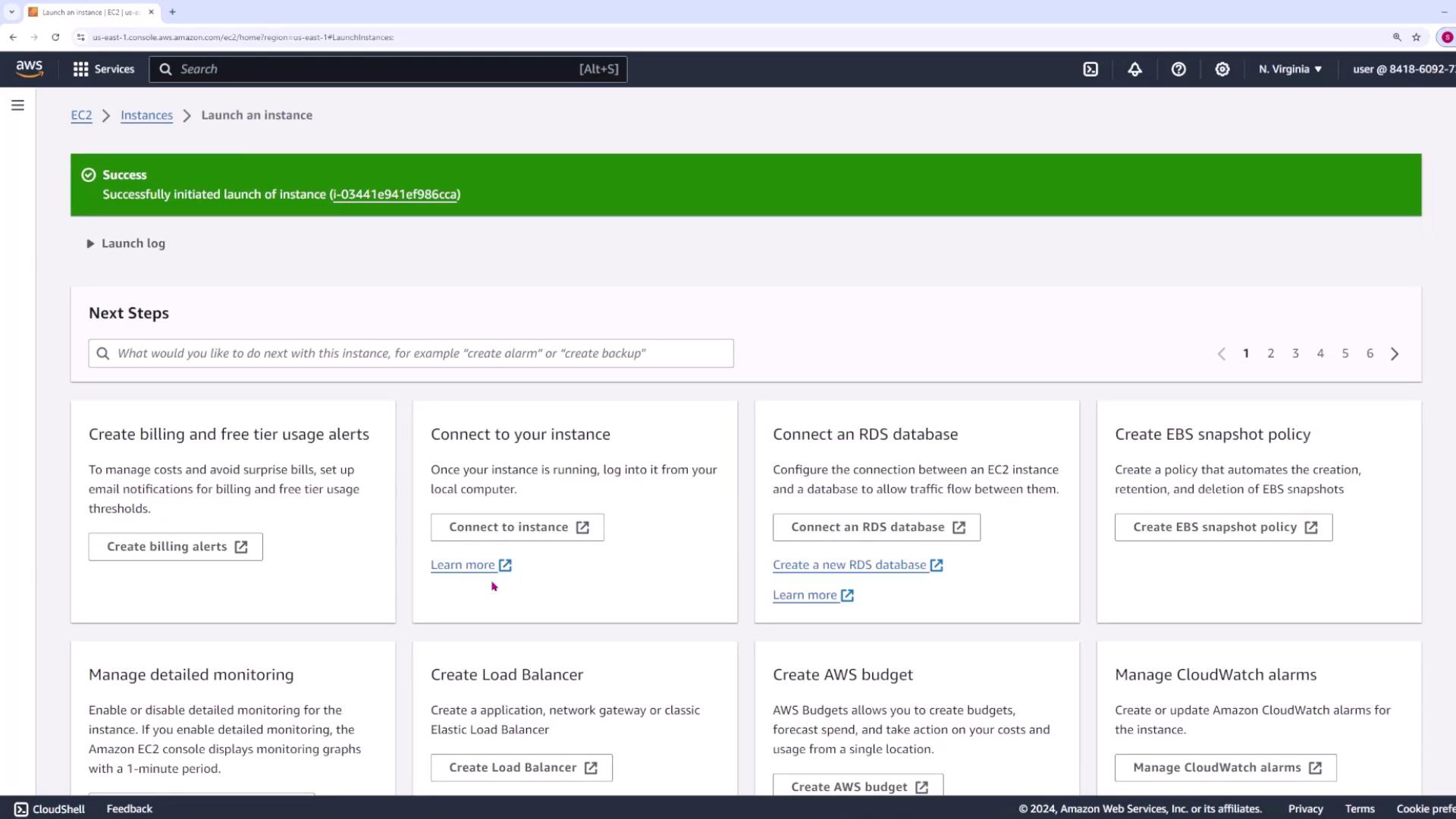

Step 2: Connecting to Your Server via SSH
Open your terminal and connect via SSH using your key (e.g., main.pem) and the default username ec2-user:
ssh -i main.pem ec2-user@<Your_EC2_Instance_IP>
Upon connecting, you might see a prompt similar to:
The authenticity of host '3.89.97.104 (3.89.97.104)' can't be established.
ED25519 key fingerprint is SHA256:MD1c0F1cn0pMsnd7TRAe1q3egJomo01RpuGpga4j3ARc.
This key is not known by any other names.
Are you sure you want to continue connecting (yes/no/[fingerprint])? yes.
Warning: Permanently added '3.89.97.104' to the list of known hosts.
Amazon Linux 2023
https://aws.amazon.com/linux/amazon-linux-2023
[ec2-user@ip-172-31-16-211 ~]$
Note
The main.pem file is essential for authentication. Your Jenkins server will also use this key later to automatically copy your code and restart your application.
Step 3: Setting Up the Application Environment
Once connected, set up your application directory, create a Python virtual environment, and verify your working directory:
mkdir app
cd app
pwd # Expected output: /home/ec2-user/app
Check that Python 3 is installed:
python3 --version
If needed, install or upgrade Python 3 before proceeding. Then, create a virtual environment:
python3 -m venv venv
ls # You should see the "venv" directory.
Step 4: Configuring a systemd Service for the Flask App
Next, configure a systemd service so that your Flask application is automatically managed by the server. Create the service file in the /etc/systemd/system directory using sudo with your preferred editor (e.g., vi):
sudo vi /etc/systemd/system/flask-app.service
Paste the following configuration into the file:
[Unit]
Description=Flask Application Service
After=network.target
[Service]
User=ec2-user
Group=ec2-user
WorkingDirectory=/home/ec2-user/app/
Environment="PATH=/home/ec2-user/app/venv/bin"
ExecStart=/home/ec2-user/app/venv/bin/python3 /home/ec2-user/app/app.py
[Install]
WantedBy=multi-user.target
Ensure that the paths in WorkingDirectory, Environment, and ExecStart correctly reflect your server's configuration.
After saving the file, reload systemd to register your new service:
sudo systemctl daemon-reload
Enable the service to start automatically on boot:
sudo systemctl enable flask-app.service
You should see an output like:
Created symlink /etc/systemd/system/multi-user.target.wants/flask-app.service → /etc/systemd/system/flask-app.service.
Start the service:
sudo systemctl start flask-app.service
Check its status to ensure it is running:
sudo systemctl status flask-app.service
Warning
At this stage, the service may fail because the app.py file has not yet been copied to /home/ec2-user/app. Once your application code is deployed, restart the service with:
sudo systemctl restart flask-app.service
Next Steps
This guide completes the initial setup of your production server. In the next tutorial, you will learn how to configure your CI/CD pipeline so that every time you push code to Git, the updated code is automatically copied to your server and the service is restarted.
Happy deploying!
Watch Video
Watch video content